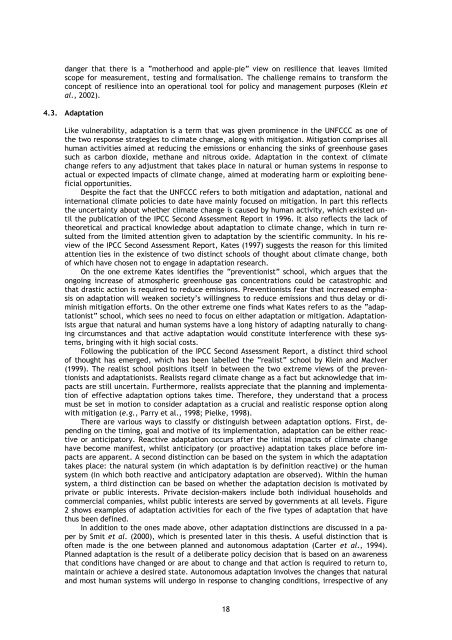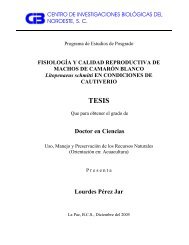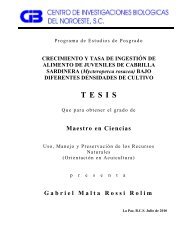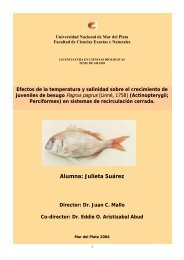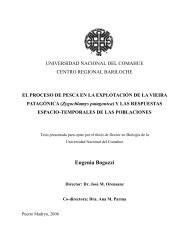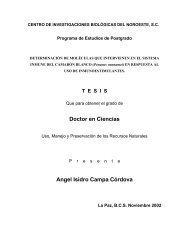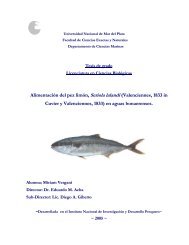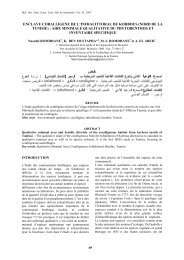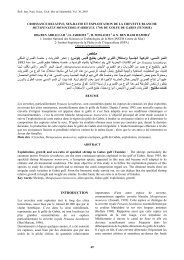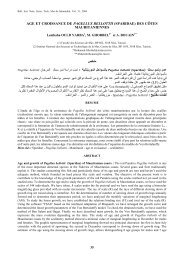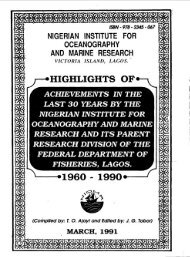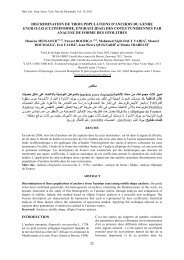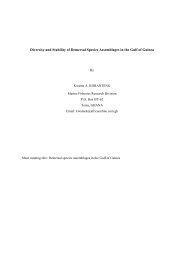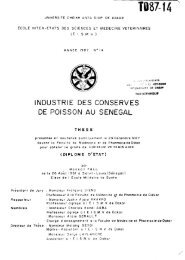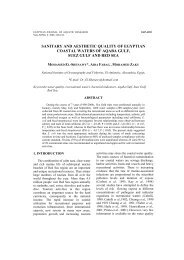Coastal vulnerability, resilience and adaptation to ... - OceanDocs
Coastal vulnerability, resilience and adaptation to ... - OceanDocs
Coastal vulnerability, resilience and adaptation to ... - OceanDocs
Create successful ePaper yourself
Turn your PDF publications into a flip-book with our unique Google optimized e-Paper software.
danger that there is a “motherhood <strong>and</strong> apple-pie” view on <strong>resilience</strong> that leaves limited<br />
scope for measurement, testing <strong>and</strong> formalisation. The challenge remains <strong>to</strong> transform the<br />
concept of <strong>resilience</strong> in<strong>to</strong> an operational <strong>to</strong>ol for policy <strong>and</strong> management purposes (Klein et<br />
al., 2002).<br />
4.3. Adaptation<br />
Like <strong>vulnerability</strong>, <strong>adaptation</strong> is a term that was given prominence in the UNFCCC as one of<br />
the two response strategies <strong>to</strong> climate change, along with mitigation. Mitigation comprises all<br />
human activities aimed at reducing the emissions or enhancing the sinks of greenhouse gases<br />
such as carbon dioxide, methane <strong>and</strong> nitrous oxide. Adaptation in the context of climate<br />
change refers <strong>to</strong> any adjustment that takes place in natural or human systems in response <strong>to</strong><br />
actual or expected impacts of climate change, aimed at moderating harm or exploiting beneficial<br />
opportunities.<br />
Despite the fact that the UNFCCC refers <strong>to</strong> both mitigation <strong>and</strong> <strong>adaptation</strong>, national <strong>and</strong><br />
international climate policies <strong>to</strong> date have mainly focused on mitigation. In part this reflects<br />
the uncertainty about whether climate change is caused by human activity, which existed until<br />
the publication of the IPCC Second Assessment Report in 1996. It also reflects the lack of<br />
theoretical <strong>and</strong> practical knowledge about <strong>adaptation</strong> <strong>to</strong> climate change, which in turn resulted<br />
from the limited attention given <strong>to</strong> <strong>adaptation</strong> by the scientific community. In his review<br />
of the IPCC Second Assessment Report, Kates (1997) suggests the reason for this limited<br />
attention lies in the existence of two distinct schools of thought about climate change, both<br />
of which have chosen not <strong>to</strong> engage in <strong>adaptation</strong> research.<br />
On the one extreme Kates identifies the “preventionist” school, which argues that the<br />
ongoing increase of atmospheric greenhouse gas concentrations could be catastrophic <strong>and</strong><br />
that drastic action is required <strong>to</strong> reduce emissions. Preventionists fear that increased emphasis<br />
on <strong>adaptation</strong> will weaken society’s willingness <strong>to</strong> reduce emissions <strong>and</strong> thus delay or diminish<br />
mitigation efforts. On the other extreme one finds what Kates refers <strong>to</strong> as the “<strong>adaptation</strong>ist”<br />
school, which sees no need <strong>to</strong> focus on either <strong>adaptation</strong> or mitigation. Adaptationists<br />
argue that natural <strong>and</strong> human systems have a long his<strong>to</strong>ry of adapting naturally <strong>to</strong> changing<br />
circumstances <strong>and</strong> that active <strong>adaptation</strong> would constitute interference with these systems,<br />
bringing with it high social costs.<br />
Following the publication of the IPCC Second Assessment Report, a distinct third school<br />
of thought has emerged, which has been labelled the “realist” school by Klein <strong>and</strong> MacIver<br />
(1999). The realist school positions itself in between the two extreme views of the preventionists<br />
<strong>and</strong> <strong>adaptation</strong>ists. Realists regard climate change as a fact but acknowledge that impacts<br />
are still uncertain. Furthermore, realists appreciate that the planning <strong>and</strong> implementation<br />
of effective <strong>adaptation</strong> options takes time. Therefore, they underst<strong>and</strong> that a process<br />
must be set in motion <strong>to</strong> consider <strong>adaptation</strong> as a crucial <strong>and</strong> realistic response option along<br />
with mitigation (e.g., Parry et al., 1998; Pielke, 1998).<br />
There are various ways <strong>to</strong> classify or distinguish between <strong>adaptation</strong> options. First, depending<br />
on the timing, goal <strong>and</strong> motive of its implementation, <strong>adaptation</strong> can be either reactive<br />
or anticipa<strong>to</strong>ry. Reactive <strong>adaptation</strong> occurs after the initial impacts of climate change<br />
have become manifest, whilst anticipa<strong>to</strong>ry (or proactive) <strong>adaptation</strong> takes place before impacts<br />
are apparent. A second distinction can be based on the system in which the <strong>adaptation</strong><br />
takes place: the natural system (in which <strong>adaptation</strong> is by definition reactive) or the human<br />
system (in which both reactive <strong>and</strong> anticipa<strong>to</strong>ry <strong>adaptation</strong> are observed). Within the human<br />
system, a third distinction can be based on whether the <strong>adaptation</strong> decision is motivated by<br />
private or public interests. Private decision-makers include both individual households <strong>and</strong><br />
commercial companies, whilst public interests are served by governments at all levels. Figure<br />
2 shows examples of <strong>adaptation</strong> activities for each of the five types of <strong>adaptation</strong> that have<br />
thus been defined.<br />
In addition <strong>to</strong> the ones made above, other <strong>adaptation</strong> distinctions are discussed in a paper<br />
by Smit et al. (2000), which is presented later in this thesis. A useful distinction that is<br />
often made is the one between planned <strong>and</strong> au<strong>to</strong>nomous <strong>adaptation</strong> (Carter et al., 1994).<br />
Planned <strong>adaptation</strong> is the result of a deliberate policy decision that is based on an awareness<br />
that conditions have changed or are about <strong>to</strong> change <strong>and</strong> that action is required <strong>to</strong> return <strong>to</strong>,<br />
maintain or achieve a desired state. Au<strong>to</strong>nomous <strong>adaptation</strong> involves the changes that natural<br />
<strong>and</strong> most human systems will undergo in response <strong>to</strong> changing conditions, irrespective of any<br />
18


